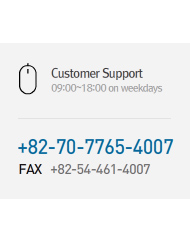Upgrading Battery Modules with RS485 Cable - without a Skybox
Page info
Name Reta / Date25-04-28 13:52 Hit8 Comment0Link
Contents
In these distributed processing networks, a variety of machines and instruments work locally, but communicate and share data or resources with one another globally using a single serial link. Unlike the standard RS232 protocol, RS485 allows many communicating parties to share the same 3-wire communications cable. For example, at 4800 baud (bits per second), each bit lasts about 200 microseconds (µs), and if communications are full duplex (e.g., if the QScreen Controller echoes each incoming character), then there is a serial interrupt every 100 µs or so. In the middle of a character, each interrupt service routine takes about 35 µs. At the start of a transmitted character, the service routine takes about 65 µs. At the end of a received character, the service routine takes about 45 µs. Thus, as a rough approximation, operating at 4800 baud full duplex requires about 40 to 50% of the 6811's CPU time (that is, an average of approximately 40 to 50 µs service time every 100 µs). If your application requires use of the secondary serial port as well as other interrupt routines, the key is to keep the interrupt service routines short and fast. We recommend that you keep the faster Serial1 port as the default serial link as you work through the exercises in this book.

If you do this now, remember to move the QScreen Controller’s serial connector back to Serial Port 1, and to change the terminal’s baud rate back to 19200 baud using the "Comm" item under the terminal’s "Settings" menu. The signal is a voltage change across a load as low as 1.5 volts differential from a driver, with a receiver detecting a differential voltage as minute as 200 millivolts. Because all of the serial I/O routines on the QScreen Controller are revectorable, it is very easy to change the serial port in use without modifying any high level code. Typing a carriage return at the terminal should now produce the familiar "ok" response via the Serial2 port. The RS232 protocol provides for four handshaking signals called ready to send (RTS), clear to send (CTS), data set ready (DSR), and data terminal ready (DTR) to coordinate the transfer of information. A data transfer is initiated by a master device when it stores a message byte into its SPDR register. This setting is only relevant for the master device, as it is the master’s clock which drives the transfer.
If the clock idles in the high state, the leading edge of the clock is a falling edge. The QScreen Controller’s kernel software contains a complete set of high level driver routines for the Serial2 port, and these functions are summarized in the Control-C Glossary. RS485 transmits binary signals by generating high and low voltages, representing binary 0s and 1s (on and off), enabling efficient long-distance communication in electronically noisy environments. Unit Load measures how much load a device can impose on the communication link. You can use the QScreen’s RS485 link to create such a multi-drop serial network. Thus RS485 is the standard protocol of choice when multi-drop communications are required. In summary, the code provided for implementing the second serial port is very flexible and can be used to support dual concurrent communications ports. The QScreen Controller controls the RS485 transceiver with bit 5 of Port D of the processor.
There are surface mount resistor pads on the QScreen that will allow you to bring out the secondary serial port to the Field Header on pins 5-6 or 7-8 as shown with the parentheses in Table 11-3. Pads are also available to bring out the RS485 signals to the DB9 Serial 1 Connector. If your application requires RS485, use the primary serial port (serial1) for RS485 communications, and use the secondary serial port (Serial 2) to program and debug your application code using the RS232 protocol. 20mA), RS485, and GPIO(Pulse). In most cases, RS485-based devices can employ communication protocols such as Modbus and ASCII to establish communication with a central control system. Modbus is the world’s most popular automation protocol in the market. This whole system allows manufacturing facilities to control their devices remotely and also set-up automation. The /SS (active-low slave select) is typically used to enable data transfers by slave devices when it is active low. The status of a device as master or slave determines how the various pins must be configured. They must all have a green light.
If you loved this post and you would like to obtain more info regarding what is rs485 cable kindly go to our page.
Warning: Use of undefined constant php - assumed 'php' (this will throw an Error in a future version of PHP) in /home1/icecap/public_html/theme/icecap/skin/board/basic_en/view.skin.php on line 149













